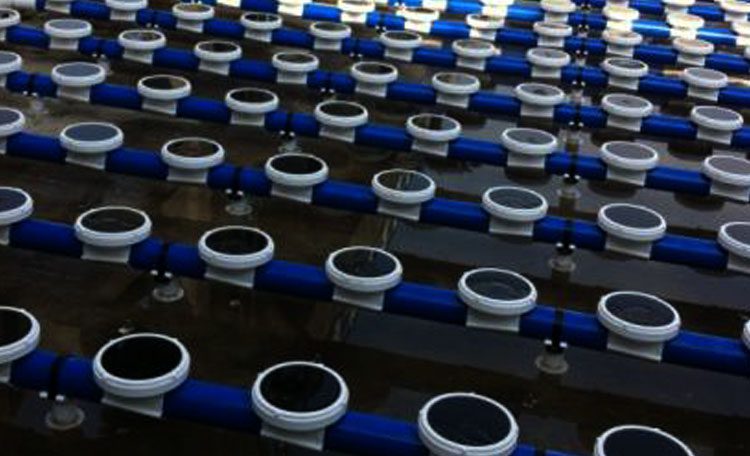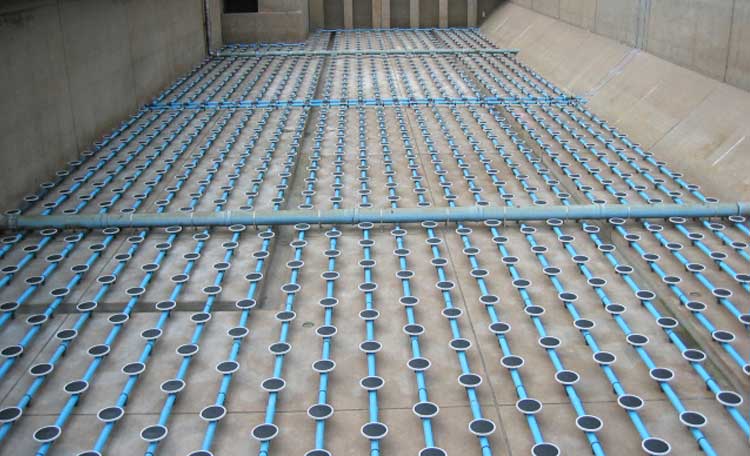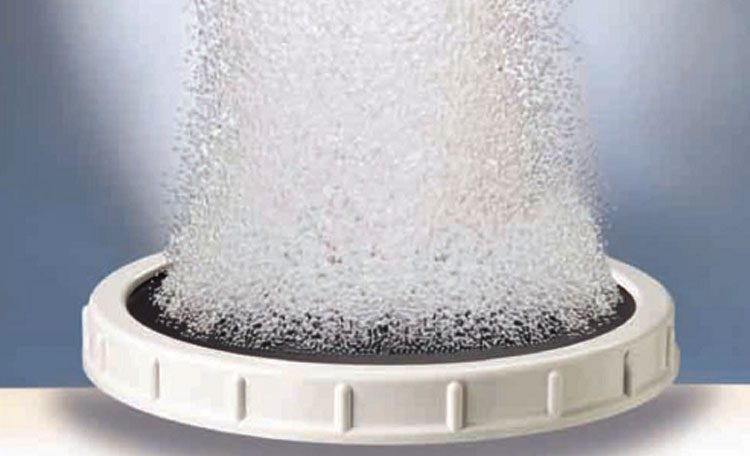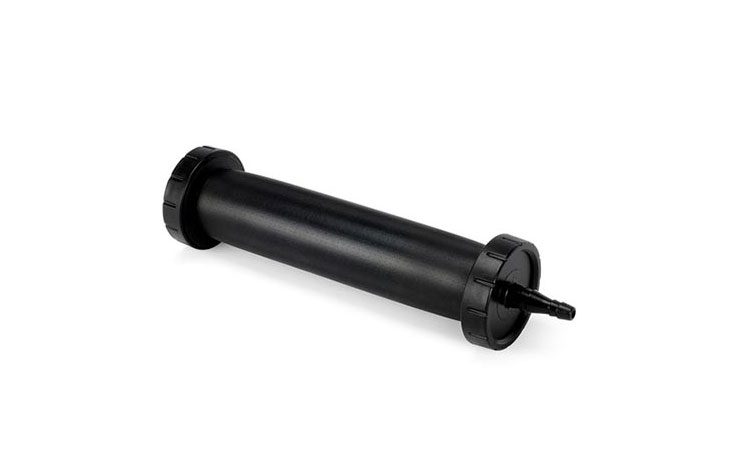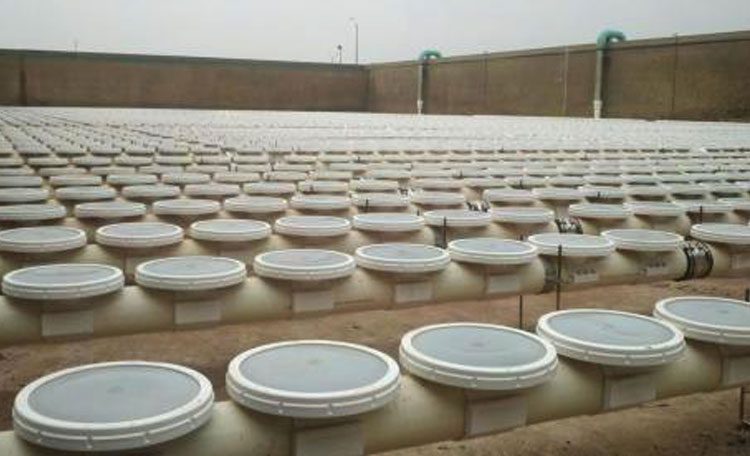Deep aerator or diffuser is a practical method for transferring oxygen from the air to different layers of wastewater and fluid located in treatment plants, which is done by creating small and large bubbles. The deep aeration system of sewage, also known as Aeration Diffuser or aeration nozzle, is designed and produced in different types according to the purpose of its use and the place where it is used. Haft Industrial Group; the manufacturer of deep wastewater aeration provides a comprehensive guide to these important products in the field of wastewater treatment. This guide introduces the types of deep aerators (fine and large bubble diffusers), disc and tube diffusers and their applications and important standards in the design, production and manufacture of deep aerators and diffusers and the price and everything you need to know about it.
What is a deep aerator or diffuser?
Aeration and transfer of oxygen from the air to the fluid in the treatment plant and aquaculture ponds is one of the most important steps to increase the quality of wastewater, which can be done in different ways. Due to the fact that in the wastewater treatment system by activated sludge method, regular feeding of aerobic bacteria is required, so with the help of various equipments such as floating surface aeration and fixed aeration, and in some cases, deep aeration is required on the floor of the treatment plant. . For this purpose, with the device and equipment, the transfer of air oxygen to the floor of the treatment plant is done by the blower. After transferring oxygen and air conditioning to the floor of the treatment plant, air must be properly transferred to all parts. Deep aeration or diffuser is used to transfer oxygen to the air and distribute it throughout the treatment plant. A sewage diffuser system is a device that emits air and oxygen carried by a blower in the form of fine and large bubbles in all parts.
Types of diffusers
Deep aeration system is designed and produced in different types according to the type of wastewater and the place of their use and the amount of oxygen required. In general, according to the size of the bubbles produced by the diffuser and the structure intended for the construction of deep aeration, these equipments can be divided into the following two general groups:
Large bubble diffuser
The Course Bubble Diffuser, as its name implies, is capable of producing bubbles as large as 3 mm. This group of deep aeration systems is mostly used for treatment plants that need to create turbulence in the fluid. This system can also be used to prevent the deposition of various materials on the floor of the treatment plant. The amount of energy required for large bubbles is more than for small ones.
Fine bubble diffuser
Fine Bubble diffuser is one of the most common types of deep aeration systems for sewage, which produces a good amount of aeration in sewage due to the production of bubbles with a size of one to 3 mm. Due to the fact that the number of bubbles produced by this type of diffuser is high, as a result, the contact surface of the wastewater with it is higher and the aeration and mixing of materials is better. Among the positive features of the fine bubble diffuser compared to the large bubble type, we can mention less energy consumption and better aeration.
In another division, this group of wastewater aeration equipment can be divided according to their general shape as follows:
Deep aerator Tube Diffuser
Tubular diffusers consist of plastic tubes and cylinders lined with EPDM membranes. The air in the plastic cylinder creates bubbles to pass through the EPDM membrane, causing bubbling and oxygenation to occur at the desired surface. The material of this type of pipe is often PVC and they are completely resistant to corrosion.
Deep aerator design (diffuser)
In designing deep aeration, it is necessary to pay attention to several important issues, the most important of which are the amount of air conditioning, energy consumption, type of wastewater and organic matter in it, corrosion resistance of the system body and the material and quality of the membrane used. is. In addition, the design of plate or plate diffusers and other types of small and large bubbles according to their overall shape and structure requires compliance with various standards that professional teams and manufacturers pay attention to.
Making a diffuser
Haft Industrial Group is one of the most experienced teams in the field of design, production and manufacture of water and wastewater treatment equipment, which has included the production and manufacture of deep aerators in its activities. The products produced by this collection are all under the supervision of experienced and professional engineers in the field of water and sewage and are in full compliance with current world standards. To know the features used in each of the products and the type and model of deep aeration, the experts of Haft Industrial Group are ready to provide advice before buying large and fine bubble diffusers.
Deep aeration price
The price of deep aeration is determined according to its general shape (disc, tubular and plate), the size of the bubbles produced by them (small and large bubbles) and the material and material used for the body and other connections in the device. Due to the very high variety of these products, we suggest that you contact the Haft Industrial Group to inquire about the price of disc and tube diffusers through the following communication channels.
Deep aeration price
The price of deep aeration is determined according to its general shape (disc, tubular and plate), the size of the bubbles produced by them (small and large bubbles) and the material and material used for the body and other connections in the device. Due to the very high variety of these products, we suggest that you contact the Haft Industrial Group to inquire about the price of disc and tube diffusers through the following communication channels.
Application of deep aeration
Very high variety in the types of deep aeration devices and large differences in the size of the bubbles produced by these products can be used in different environments. The main applications of large and fine bubble disk diffuser systems and the reasons for making deep aeration can be mentioned as follows:
· Aeration of wastewater treatment by activated sludge method
· Industrial wastewater treatment such as textiles and drug factories
· Treatment and aeration of fish ponds and other aquatic animals
· Lagoon and successive SBR canals and reactors
· Ozonization of wastewater treatment plants and swimming pools
· Domestic, industrial and municipal wastewater treatment

